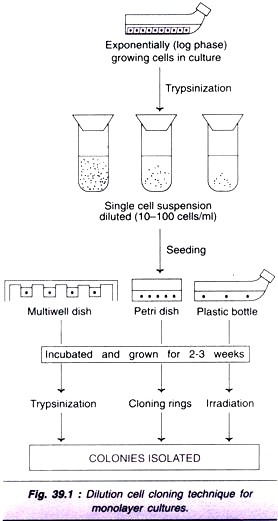In this article we will discuss about the self-incompatibility in plants.
Sometimes bisexual plants produce functional male and female gametes, yet self-pollination does not lead to fertilisation and there is no seed setting. The pollen grains may fail to germinate on the stigma; or, even if pollen tubes are formed their growth may be inhibited.
Such a condition where pollen grains fail to fertilize ovules of the same plant is known as self-incompatibility or self-sterility. Nicotiana (tobacco) was one of the first plants in which self-sterility was noticed.
Breeding tests have established that self-incompatibility is controlled by multiple alleles of a single gene and may be of two types—gametophytic or sporophytic. The gametophytic self-incompatibility (GSI) is controlled by the genotype of the pollen grains.
This type is quite common in families like Liliaceae, Gramineae and Solanaceae. Sporophytic self-incompatibility (SSI) is controlled by the somatic or sporophytic cells of the plant which produce pollen grains, as observed in families Cruciferae and Compositae.
East and Mangelsdorf in 1925 explained the behaviour of sterility genes. The gene controlling incompatibility is designated S and its multiple alleles are represented by a series S1, S2, S3, S4, S5,….. and so on. Only two alleles are present in the diploid cells of a plant.
In the GSI system pollen grains produced by an S1S2 plant will have either S1 or S2 allele and are not able to pollinate a pistil with S1S2 genotype. But if S1 or S2 pollen grains land on an S3 S4 pistil, fertilisation takes place.
In plants belonging to the SSI system if even one of the alleles present in the sporophytic tissue of the male parent is present in the pistil of the female parent, then all the pollen grains produced by the male parent fail to effect fertilisation of that pistil.
Thus, if the male parent has the genotype S1S2 it would be incompatible with plants having S1S2, S1S4, S1S5, S2S3, S2S4, S2S5 genotypes, but would be compatible with S3S4, S3S5, S4S5 plants (Fig. 5.2c). A very large number of alleles of the incompatibility genes are known to be present in other plants. Oenothera (evening primrose) has 37 different self-sterility alleles and red clover has more than 200.
